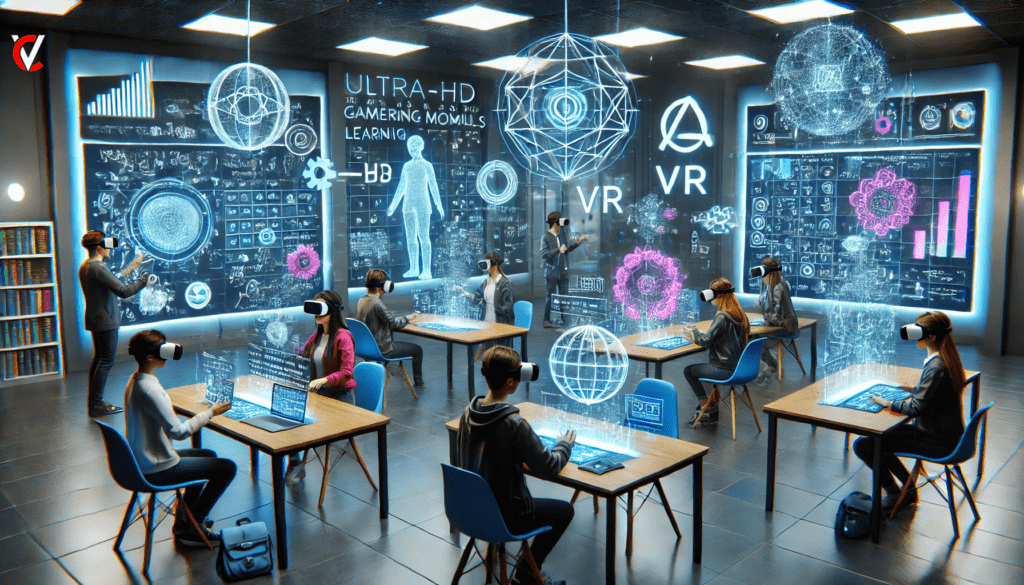Gamification is revolutionizing learning by integrating game mechanics into education and corporate training programs. By incorporating elements such as points, badges, leaderboards, and interactive challenges, organizations and institutions are enhancing engagement, motivation, and retention of information. This approach has gained significant traction across various industries, fundamentally reshaping the way individuals acquire knowledge and develop skills.
The Science Behind Gamification in Learning
Gamification leverages psychological principles to create a more engaging and rewarding learning experience. It taps into both intrinsic and extrinsic motivation, ensuring that learners remain committed to their educational goals. Key psychological factors that drive the effectiveness of gamification include:
✔ Instant Feedback: Real-time performance assessments allow learners to identify mistakes, improve comprehension, and refine their skills immediately.
✔ Enhanced Engagement: Interactive and immersive learning experiences foster increased participation, leading to improved knowledge retention.
✔ Motivation Through Rewards: Virtual incentives such as badges, certifications, and rankings instill a sense of achievement and encourage continued progress.
✔ Healthy Competition: Leaderboards and team-based challenges create a competitive yet collaborative learning environment, motivating individuals to excel.
✔ Sense of Progression: Progress bars, level advancements, and goal-setting mechanisms reinforce a sense of accomplishment, encouraging learners to continue advancing.
With these components in place, gamified learning experiences transform traditional educational approaches into dynamic and impactful knowledge acquisition processes.

Gamification in Corporate Training
Organizations worldwide are integrating gamification into corporate training programs to enhance employee skill development and workplace engagement. This approach has proven to be highly effective in improving learning outcomes and workforce productivity.
Key Benefits of Gamified Corporate Training:
📌 Higher Employee Engagement: Traditional training methods often struggle to capture employees’ attention. Gamified learning fosters active participation, making training sessions more enjoyable and effective.
📌 Better Knowledge Retention: By utilizing interactive simulations and real-world scenarios, employees can apply their learning practically, leading to improved information retention.
📌 Performance Monitoring and Analytics: Gamification enables organizations to track employee progress through performance metrics, helping identify skill gaps and areas for improvement.
📌 Collaboration & Teamwork: Multiplayer challenges and interactive learning modules encourage teamwork and peer collaboration, fostering a more engaged and connected workforce.
📌 Adaptability to Learning Styles: Gamification can cater to different learning styles by offering visual, auditory, and kinesthetic engagement methods.
Real-World Applications in Business Training:
• McDonald’s Gamified Till-Training Program: McDonald’s implemented a simulation-based training system for employees, enhancing customer service efficiency and operational accuracy.
• Deloitte Leadership Academy: Deloitte introduced gamified training for executives, using leaderboards and progress tracking to make leadership development more engaging and impactful.
• IBM’s Innovation Jam: IBM leveraged gamification to encourage employees to brainstorm and develop innovative solutions, enhancing problem-solving skills and strategic thinking.
With businesses increasingly relying on digital training solutions, gamification is playing a crucial role in building a skilled and motivated workforce.

Gamification in Education
Educational institutions are integrating gamification to enhance student engagement, making learning more interactive and effective. Digital tools and game-based methodologies are now widely used in classrooms to promote active participation.
Key Gamification Strategies in Education:
🎮 Game-Based Learning Platforms: Apps like Kahoot!, Duolingo, and Classcraft incorporate quizzes, point systems, and challenges to create engaging learning experiences.
🏆 Virtual Rewards & Leaderboards: Students earn digital badges and rank on leaderboards, encouraging healthy competition and motivation to excel.
📖 Storytelling & Role-Playing: Incorporating narrative-driven learning and immersive role-playing exercises enhances students’ ability to understand and retain complex concepts.
🔄 Adaptive Learning Paths: AI-driven gamification tailors content to individual students, adjusting difficulty levels based on progress and performance.
🧩 Puzzle-Based Learning: Subjects like math and science benefit from problem-solving games that require critical thinking and analytical skills.
Case Study: Finland’s Gamified Education Model
Finland, known for its progressive education system, has successfully integrated gamification into its curriculum. By using digital learning platforms and interactive exercises, Finnish schools have significantly improved student engagement and academic performance. The use of personalized and technology-driven gamified experiences has led to higher knowledge retention and improved overall learning outcomes.
As the education sector continues to evolve, gamified learning experiences are becoming an essential tool in shaping the future of learning.
The Future of Gamification in Learning
With rapid advancements in technology, the future of gamification in learning is expected to become even more dynamic and immersive. Emerging trends include:
🚀 AI-Powered Personalized Learning: Artificial intelligence will enable customized learning experiences based on individual progress and performance, offering real-time adjustments to difficulty levels and personalized recommendations.
🕶 Virtual & Augmented Reality (VR/AR): Immersive learning environments using VR and AR will provide hands-on training experiences, especially in fields like healthcare, engineering, and technical education.
📱 Mobile Gamification: The widespread adoption of mobile-based learning apps will make gamification more accessible, allowing learners to engage with content anytime, anywhere.
🔗 Blockchain for Credentialing: Digital badges and certifications secured via blockchain will provide verifiable proof of learning achievements, helping professionals showcase their skills globally.
🧠 Neuroscience-Driven Gamification: Advances in cognitive science will influence game mechanics, optimizing how games enhance memory retention and problem-solving skills.
Organizations and educational institutions that embrace these innovations will be better positioned to enhance engagement, boost knowledge retention, and drive meaningful learning outcomes. Gamification is no longer just an emerging trend—it is a strategic approach shaping the future of education and professional development.
Read More : https://ciovisionaries.com/articles-press-release/

